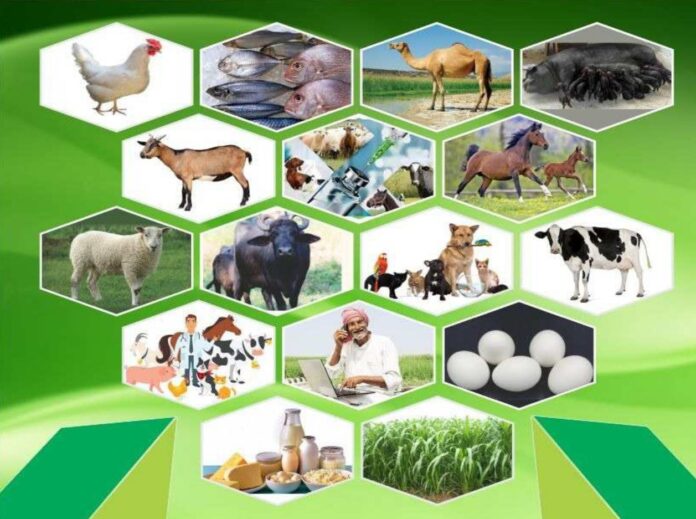Wildlife Stress Assessment using Non-Invasive Markers
Dr. Neha Rajawat
(Ph.D. Research scholar ICAR-NDRI Karnal)
Stress responses are crucial for all mammals coping with challenges, including those in zoo animals and wild animals. Stressors such as public presence, noise, lack of space, and natural substrate can deeply affect an animal’s health and welfare. In the wild, species are threatened by environmental perturbations such as forest fragmentation and habitat destruction, as well as being hunted. These stressful situations have physiological costs and cause health problems such as alteration in growth and reproduction, immune system inhibition, and depression that is conducive to several infectious diseases.
HPA axis Activation:
Stress in animals results in the activation of the hypothalamic-pituitary-adrenal axis (HPA axis). When the amygdala senses a threat, the hypothalamus and anterior pituitary gland work together to orchestrate a physiological response. The anterior pituitary gland releases an adrenocorticotropin-releasing hormone (ACTH) into the bloodstream in reaction to the neurohormone corticotropin-releasing hormone (CRH), which is produced in the hypothalamic paraventricular nucleus. ACTH then stimulates the adrenal cortex to release glucocorticoids such as cortisol and cortisol, which deal with stress via their widely dispersed intracellular receptors. Glucocorticoids are metabolic hormones that maintain the energy balance and act as key components of the acute stress response. High levels of glucocorticoids may hinder immune function, reproduction, and survival if cortisol secretion continues for a very long time. An animal under constant stress will not respond to the same stimulus in the same way. Additionally, the HPA axis’s activity is altered by the negative feedback regulation loop.
Stress Assessment:
Glucocorticoids have been extensively used as stress indicators in many species of domestic, captive, and wild animals, including humans. Non-invasive measures such as faeces, saliva, and hair have been developed to assess stress without sample collection interference. These non-invasive techniques can also determine baseline feedback-free hormone concentrations and responses to ACTH, handling, anesthesia, or other stressors.
Recent studies have explored non-invasive techniques to investigate stress and reproduction in wild wildlife, both in captivity and in the wild. These methods are effective in preventing harm caused by frequent manipulations in conventional procedures. Studies have shown that fecal cortisol concentrations in captive and wild animals can be a reliable predictor of changes in plasma cortisol concentrations. For example, a study on Alouatta pigra monkeys found that forest defragmentation and environmental factors like forest preservation affected their faecal cortisol levels. Other studies have evaluated environmental manipulations on captive Ocelots, Margays, and Jaguarundis using behavioral and faecal cortisol variation. Non-invasive measures such as faeces, saliva, and hair can also be used to assess stress without sample collection interference. These techniques can also determine baseline feedback-free hormone concentrations and responses to stressors like ACTH, handling, anaesthesia, or other stressors. Overall, non-invasive methods are becoming more widely used in wildlife research to better understand and manage stress in these animals.
Studies focused on Minimal invasive procedures:
Recent studies have explored non-invasive techniques to investigate stress and reproduction in wild wildlife, both in captivity and in the wild. These methods are effective in preventing harm caused by frequent manipulations in conventional procedures. Studies have shown that fecal cortisol concentrations in captive and wild animals can be a reliable predictor of changes in plasma cortisol concentrations. For example, a study on Alouatta pigra monkeys found that forest defragmentation and environmental factors like forest preservation affected their faecal cortisol levels. Other studies have evaluated environmental manipulations on captive Ocelots, Margays, and Jaguarundis using behavioral and faecal cortisol variation. Non-invasive measures such as faeces, saliva, and hair can also be used to assess stress without sample collection interference. These techniques can also determine baseline feedback-free hormone concentrations and responses to stressors like ACTH, handling, anesthesia, or other stressors.
Conclusion:
Overall, non-invasive methods are increasingly being used in wildlife studies to better understand and control stress in these species. These indicators provide a consistent response while also focusing on animal welfare.
Keywords: Climate Change, well-being, stress, Transportation, adaptation, welfare, Non-invasive



